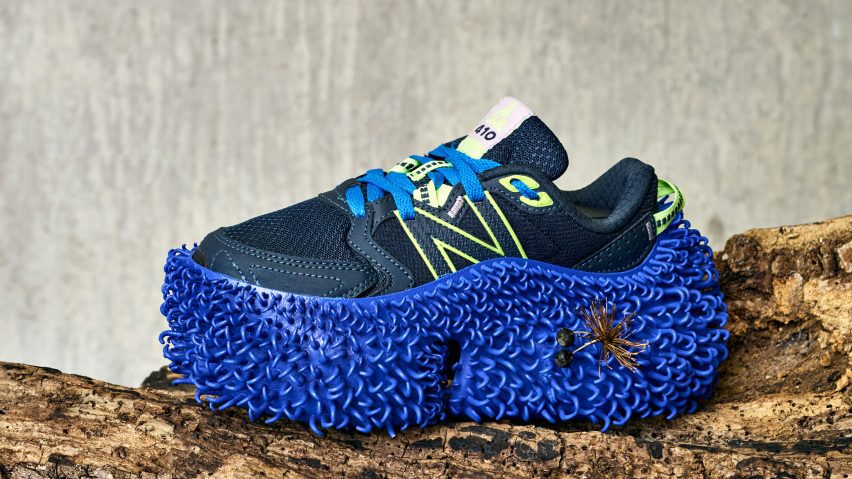Central Saint Martins graduate Kiki Grammatopoulos has created a chunky, bristly running shoe outsole that helps to spread plants and seeds in cities, as part of a project she's titled Rewild the Run.
Grammatopoulos used biomimicry in the project, borrowing elements from nature to create her sneaker outsole, which is densely covered in tiny hooks that grip onto dirt and plant matter as the wearer treads.
The hooks allow the shoes to mimic the phenomenon of epizoochory, where seeds are transported by becoming attached to an animal's fur.
Grammatopoulos looked mainly to two plants for her design: the cocklebur, which produces typical burr seeds, and the grapple plant, whose fruit is covered in small barbs.
The designer said she wanted to use fashion and sport to engage individuals with the cause of rewilding, and through that to encourage a wider rethink about our relationship with nature.
Rewilding is a form of ecological restoration that focuses on expanding woodlands and allowing nature to take its course with minimum human interference.
"I wanted to explore our relationship, or lack thereof, with the wild in our cities, and how these urban environments would look if ecology and biodiversity took over — some of which we saw over Covid-19," Grammatopoulos told Dezeen.
"Our awareness of natural systems is frail, particularly in cities, even while being fundamental to humanity's ongoing existence."
"For there to be any hope in positively evolving our cities to be able to support and encourage the existence of both human and non-human species requires a set of processes that get everyone involved in a radical transformation."
As well as seeds, Grammatopoulos' outsole design nods to another element from her research — the role in rewilding played by "keystone species".
Keystone species are those that have an outsized role in holding their ecosystem together, and when it comes to restoring nature in the UK and Europe, one of these is regarded to be the bison, which is now being reintroduced in areas after a century of extinction.
The outsoles' chunky appearance and cloven tread are a homage to bison hoofs and the animal's role in promoting the movement of other species by stamping pathways through the forest.
"Unfortunately it wasn't possible to introduce bison to King's Cross, so I continued to explore how the public could emulate these keystone species' intricacies instead through product design," said Grammatopoulos.
"Ultimately I believe we don't just need our cities to be wild, we need to be a little wild ourselves," she continued.
Grammatopoulos created Rewild the Run in her Material Futures masters course at London university Central Saint Martins. The design is intended to be a conceptual representation of what future rewilding footwear could look like — not the final product.
Her demonstration prototype was modelled to fit over a standard New Balance trail running shoe, and 3D printed in nylon polymer.
Ideally, Grammatopoulos would like the product to be 3D printed or injection-moulded in a performance rubber in the future, if she can find a manufacturing partner.
Currently, she is testing her designs with the London-based running community Run the Boroughs, which she says is allowing her to observe the effectiveness of sport as a vehicle to rewild urban environments.
Rewilding is growing in popularity as an approach to tackling climate change and biodiversity loss. Writing for Dezeen, architect Christina Monteiro called for a strategy to rewild cities to create a better environment for children and designer Sebastian Cox has rewilded a golf course in south London.

